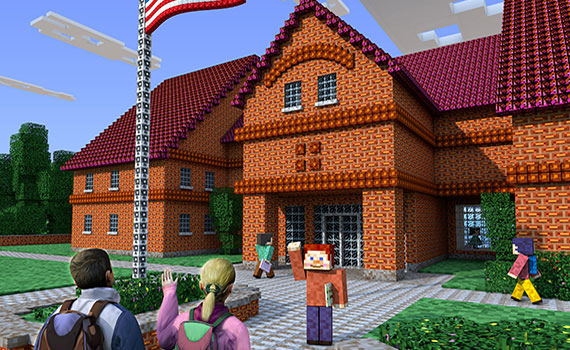 |
If the use of technology in education is about meeting students where they are, it seems like gaming would be a good place to start. After all, as far back as 2008, the Pew Internet & American Life Project reported that 97 percent of kids ages 12 to 17 were playing some kind of digital game every week; about half played daily.
And why not? When Neil Postman wrote his classic, Amusing Ourselves to Death, about the shift from a typographically focused society to one that was ruled by television, his title could just as easily have been foretelling the increasing use of gamelike activities in all aspects of life. Consumers spent about $21 billion on the game industry last year. Half of all American households have dedicated game consoles; many have two. We don't fly without getting our miles. We can't shop without handing over our rewards card. We seem to be a species well-suited for seeking "pleasure and reward," notes Janna Quitney Anderson, director of Pew and Elon University's Imagining the Internet Center. Gaming and its trappings play right into our appetites.
Proponents say gaming provides a compelling way to engage students and make educational efforts more effective. Others believe it simply provides a merry diversion from what should truly be happening in the classroom. Where do the golden tokens reside? Let's click for a roll of the die and find out.
"Failing Up"
Games and playing have been part of classrooms "for a long time," declares Katie Salen, well-known game designer, DePaul University professor, and one of the masterminds behind Quest to Learn, a public school in New York designed around game playing. "Play is the way that human beings learn about the world…. That's how we discover how things work."
Games and playing have been part of classrooms "for a long time," declares Katie Salen, well-known game designer, DePaul University professor, and one of the masterminds behind Quest to Learn, a public school in New York designed around game playing. "Play is the way that human beings learn about the world…. That's how we discover how things work."
Besides providing an environment in which to "learn by doing," games offer several other educational benefits, according to Salen. For one, games structure problem-solving in a way that helps the player to "fail up," as Salen puts it. "Every game designer expects every player to be successful in their game," she notes. The best games are designed to makes the problem to be solved both hard and fun so that students will "want to continue to persist on that problem."
Sometimes, the learner will have to try hundreds of times to find success. "You know you're getting better at that particular skill every time you try, and you're learning something about how to solve that particular problem," Salen says. The failure is productive. Rather than hitting some kind of wall and just stopping--which is "what kids tend to experience in the classroom"--failure becomes "a fantastic thing because it's about iteration and discovery. When I try it again, I'm going to apply that particular piece of learning."
Data Rich
One of Salen's arguments for the use of games in education should sit well with most policymakers: Games are rich with data. "They're filled with information for players around how they're doing, where they need to go, how they need to get better," she notes. That data can be used by teachers as well as students, she adds. "Games open up assessment, so it's really kid-facing, and that can be incredibly powerful."
No comments:
Post a Comment